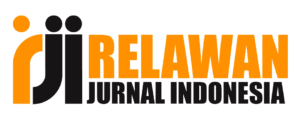Optimum Form of Hydrogen Bond in Water-Alcohol Systems : A Study Through Molecular Dynamic Modelling
DOI:
https://doi.org/10.31851/sainmatika.v15i1.1738Keywords:
hydrogen, bond, molecule, torsion, energyAbstract
Because of the limited human sight to the molecular view, there are still a little information gained from molecular properties especially on how its iteract. Many research equipment brought up in order to gain more information, but still it was limited. Most of nowaday equipments are works by measuring energy gained or released by molecules without view actual molecule of a compound. One best way to describe how molecules interact is using visualization that generate molecular modelling. It work by mathematics computational that measure every aspect of physical works. Of course its not a single solution, but for now its the best choice to be used. In this molecular modelling, equipment we need is the program Hyperchem (software) and computer (hardware). Main purpose is study the hydrogen bonds in water-water, methanol-water and ethanol-water system. Properties we study is stable state of hydrogen bond based on the lowest energy measured if radius, bond angle and torsion were controlled. The result showed that the most stable state of hydrogen bond in water-water system is 3,025 Ã… in lenght, 79â° in HO-H angle and 0â° in bond torsion. Meanwhile in methanol-water system is 2,935 Ã… in lenght, 154â° in HO-H angle and 257â° in bond torsion. For ethanol-water system the optimum form is 2,94 Ã… in lenght, 143,5â° in HO-H angle and 314â° in bond torsion.
Â
Keywords : hydrogen, bond, molecule, radius, angle, torsion, energy
Â
ABSTRAK
Â
Pengamatan terhadap model molekul masih terbatas, sedikit informasi diperoleh dari sifat-sifat molekul dan interaksinya. Banyak penelitian dikembangkan untuk mendapatkan informasi tentang ini tetapi masih terbatas. Saat ini sebagian besar penelitian mengukur energi yang diperoleh atau dilepas oleh mlekul tanpa melihat solekul sebenarnya dari suatu senyawa. Salah satu cara terbaik untuk menggambarkan bagaimana molekul berinteraksi menggunakan visualisasi yang menghasilkan pemodelan molekuler. Cara ini bekerja dengan perhitungan matematika yang mengukur setiap aspek perubahan fisik. Hal ini bukan satu-satunya cara tetapi saat ini menjadi pilihan terbaik. Dalam pemodelan molekuler ini, peralatan yang kita butuhkan adalah program Hyperchem (perangkat lunak) dan komputer (hardware). Tujuan utama adalah mempelajari ikatan hidrogen dalam sistem air-air, metanol-air dan etanol. Permasalahan yang kami pelajari adalah keadaan stabil ikatan hidrogen berdasarkan energi terendah yang diukur jika jarak, sudut ikatan dan torsi dikontrol. Hasilnya menunjukkan bahwa ikatan hidrogen yang paling stabil dalam sistem air-air adalah jarak ikatan 3,025 Ã… , sudut H-O-H 79â° dan torsi dalam ikatan 0â°. Sementara itu dalam sistem metanol-air adalah jarak ikatan 2.935 Ã…,sudut H-O-H 154â° dan sudut torsi 257â°. Untuk sistem etanol-air, bentuk optimumnya adalah jarak ikatan 2,94 Ã… , sudut H-O-H 143,5â° dan sudut ikatan 314â°.
Â
Kata Kunci: hydrogen, ikatan, molekul, torsi, energiReferences
Amrullah. (2016). Simulasi Dinamika Molekular. Yogyakarta.
Effendy. 2006. Teori VSEPR Kepolaran, dan Gaya Antarmolekul. Malang : Bayumedia Publishing.
Gutowska, I., Machoy, Z., & Machaliński, B. (2005). The role of bivalent metals in hydroxyapatite structures as revealed by molecular modeling with the HyperChem software. Journal of Biomedical Materials Research - Part A, 75(4), 788–793. https://doi.org/10.1002/jbm.a.30511
Jian Hua, Chen, Yu Cun, jin, Yingjie.Effects of hydrogen bond on melting potni of azole explosives. Jurnal of Molecular Structure. 2018
Kurniawan, Y dan Nur, M. 2005. Studi Penentuan Dinamika Proton Dalam Ikatan Hidrogen H2O Padatan Satu Dimensi, Berkala Fisika. 8 (3) : 107 - 117.
Li Fabing, Men Zhiwei, Li Shuo, Wang Shenghan, Li Zhanlong, Sun Chenglin. Study of hydrogen bonding in ethanol-water ninary solutions by Raman spectroscopy. Jurnal Spectrochmica Acta part A: Molecular and Biomolecular Spectroscopy 189 (2018; 621 -624
Plummer, L. M. (1990). Molecular dynamics simulations and quantum mechanical studies of the hydrogen bond in water cluster systems*, 237(September 1989), 47–61.
Silberberg, M. S. (2015). Chemistry, The Molecular Nature of Matter and Change (7th ed.). New York: McGraw-Hill Education.
Stachowicz, A., & Korchowiec, J. (2013). Bond Detectors for Molecular Dynamics Simulations , Part I : Hydrogen Bonds, 2261–269. https://doi.org/10.1002/jcc.23385









